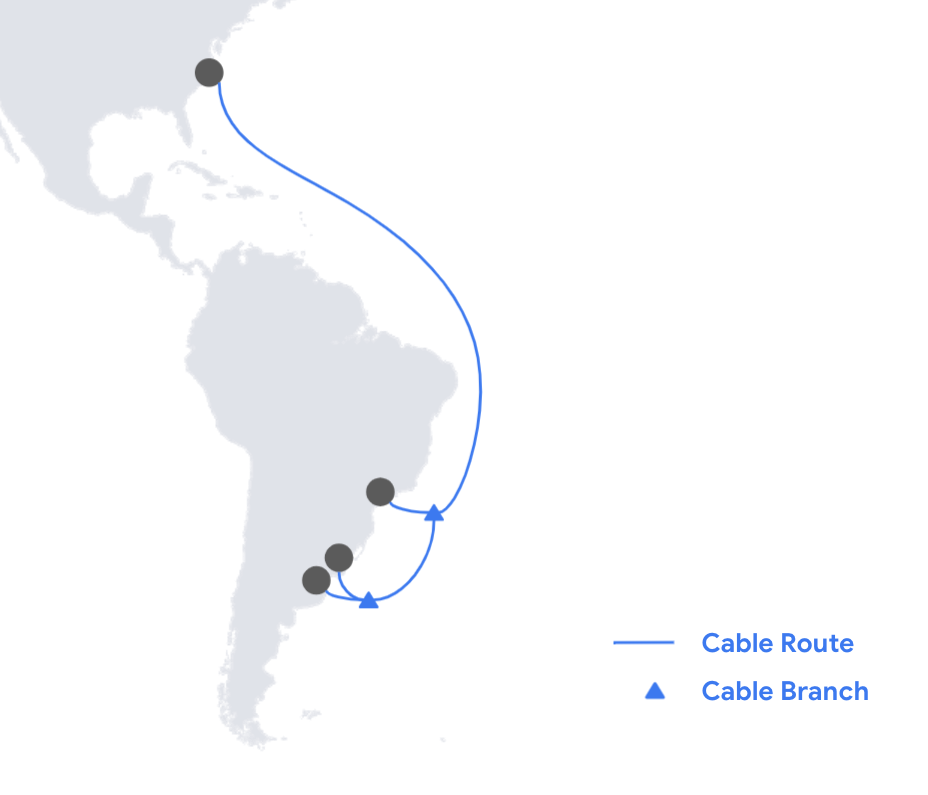
Over the past few years, Google has built its own subsea cables in addition to partnering on joint efforts and leasing access. Google’s latest private cable project is “Firmina” to connect North and South America.
It will run from the East Coast of the United States to Las Toninas, Argentina, while there are two additional landings in Praia Grande, Brazil, and Punta del Este, Uruguay. There are 12 Firmina fiber cable pairs to serve both first-party users of Google services and Cloud customers.
Firmina’s particular technical achievement is that it will be the “longest cable in the world capable of running entirely from a single power source.” This redundancy measure kicks in if other power sources go out and involves supplying the cable with 20% higher voltage compared to previous systems.
With submarine cables, data travels as pulses of light inside the cable’s optical fibers. That light signal is amplified every 100 km with a high-voltage electrical current supplied at landing stations in each country. While shorter cable systems can enjoy the higher availability of power feeding from a single end, recent longer cables with large fiber pair count have made this harder and harder.

Like Curie (US to Chile & Panama), Dunant (US to France), Equiano (Portugal to South America, and Grace Hopper ( US to UK & Spain), Firmina is named after a notable figure:
We sought to honor a luminary who worked to advance human understanding and social justice. The cable is named after Maria Firmina dos Reis (1825 – 1917), a Brazilian abolitionist and author whose 1859 novel, Úrsula, depicted life for Afro-Brazilians under slavery. A mixed-race woman and intellectual, Firmina is considered Brazil’s first novelist. With this cable, we’re thrilled to draw attention to her pioneering work and spirit. You can learn more about Firmina in this Google Doodle.
Author: Abner Li
Source: 9TO5Google



